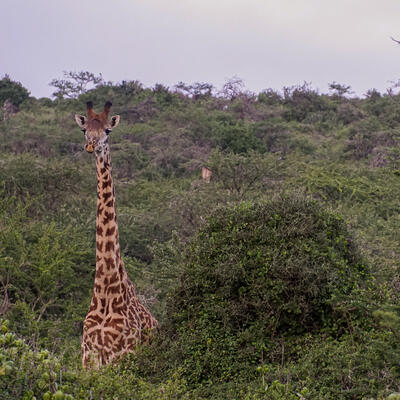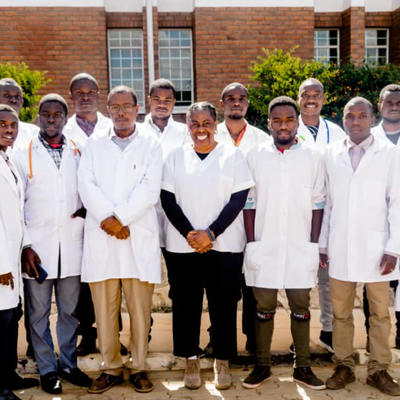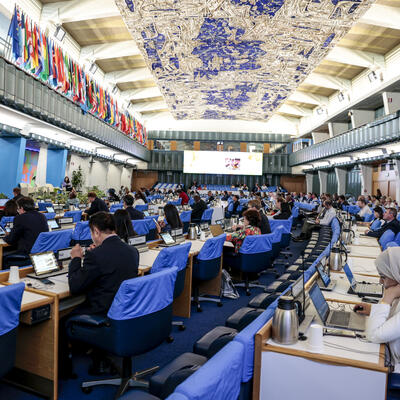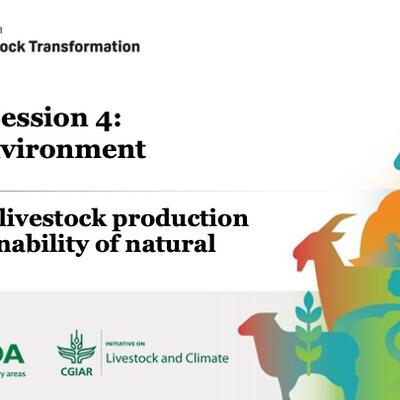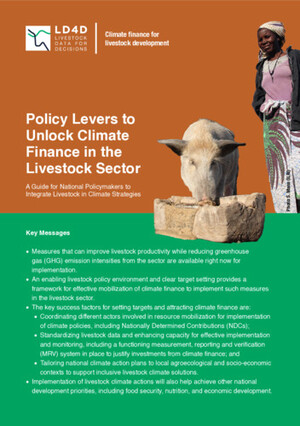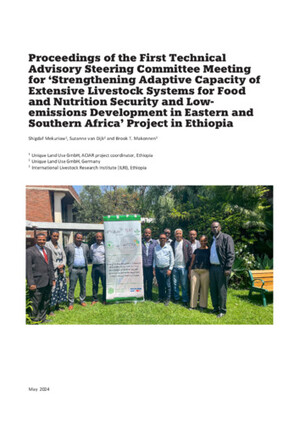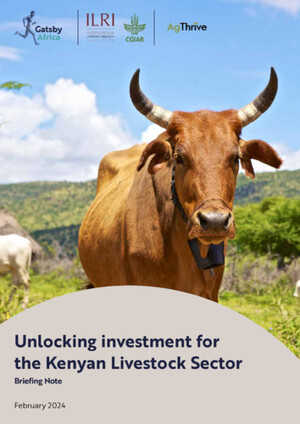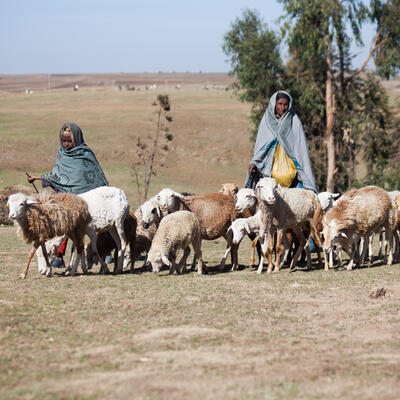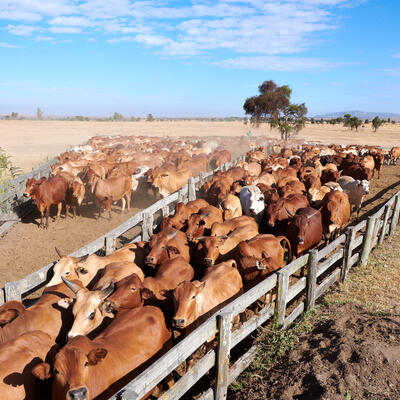
When did the chicken first cross the road?
There are nine chickens in the world for every human, but the story of how the species emerged from the jungles of Southeast Asia some 8,000 years ago to become the world’s favoured protein source is a complicated one. ‘The success of the chicken has a lot to do with its diversity, and that diversity was interwoven into its early evolution’ says International Livestock Research Institute (ILRI) principal scientist Olivier Hanotte.
Hanotte and an international team of researchers recently published a paper on the wild origins of the domestic chicken in BMC Biology. ILRI’s David Aronson recently sat down with Hanotte to unravel the science behind his most recent discoveries.
 Olivier Hanotte at the Institutional Planning Meeting (IPM), 2019, Addis Ababa, Ethiopia (photo credit: ILRI/Apollo Habtamu).
Olivier Hanotte at the Institutional Planning Meeting (IPM), 2019, Addis Ababa, Ethiopia (photo credit: ILRI/Apollo Habtamu).David: Let’s begin at the beginning. Your paper’s principal message is that the animal we now know as the chicken has a very complicated ancestry, right? Why is that important?
Olivier: As geneticists, we all know that breeding improvement programs rely on diversity: No diversity, no breeding improvements. So, what the paper reveals is that the diversity of the chicken is more complex than we previously understood, because it not only involved the main ancestor, but also involved crossing with other species. The other interesting point of the paper is that this crossing with other species occurred in different parts of the world. So there is not such a thing as a common chicken that is uniform across the world. What a chicken is depends on where you are. And the simple reason for that is that other species have a restricted geographic distribution. As the domestic chicken traveled around, they would cross with species A in some parts of the world and with species B in other parts. Chickens are diverse in their ancestry and in their geographic spread.
David: Okay. So, let me back up though, and ask you a basic Biology 101 question. What I remember from high school is that a species is defined as an organism that can mate with a like organism to produce fertile offspring.
Olivier: That’s correct.
David: So how do chickens cross with other species?
Olivier: Right, this is a good question. Indeed, the traditional and accepted worldwide view of a species definition is reproductive isolation in regard to other species. In other words, if tomorrow I discover a new species of birds on the ILRI campus [NB: In addition to his scientific work, Hanotte is ILRI’s unofficial resident birdwatcher] I can only name it as a new species if I can show that there that there is reproductive isolation in the wild. Now, things become more complex when you put things in captivity, okay? What I mean is that when you put animals in captivity, in a confined artificial environment, you can sort of force them to reproduce. So, in other words, if you are in the wild and you put a domestic chicken with another related species together, it most likely will not work. But if you capture the other species, and you bring it back to your chicken shed, they will try to mate. In captivity, everything is possible. This hybridization for the most part is driven by human intervention. Even today, there are well-known hybrids between a domestic chicken and other species, such as the Green junglefowl on the Indonesian island of Java. And they produce a hybrid called the Bekisar that is praised for its beauty and voice. And if you continue to cross wild birds over several generations, you get what we call introgression.
David: Right—and that concept of introgressive hybridization is critical to your paper. Your study shows that after domestication from the Red junglefowl, the domestic chicken underwent multiple introgressive hybridization episodes that have impacted its genome. So can you explain to a layperson what introgressive hybridization is?
Olivier: Okay. Hybridization is very simple. It simply means you cross things, okay. And basically introgressive hybridization is that you cross things and then in subsequent generations, once you have a cross, you only keep what may be useful to you. A typical example: If you look to the dog of Tibet, the Tibetan Mastiff, it lives at a very high altitude for a dog. And it adapted to the altitude by mixing with the local wolf. And probably the first generation to cross may have been too aggressive, not tame enough and so on. So, the Tibetans then probably crossed that progeny with a dog again, and again, until they found a progeny of this mix that could thrive at high altitude like the local wolf but otherwise behave like a dog. And the same thing happened with the chicken. You hybridize your animal with the local animal, and you keep whatever you select for, which could be a matter of human preference, for a certain kind of plumage or whatever.
David: Right.
Olivier: But I should add that in our paper, we couldn’t really find any evidence of this introgressive hybridization. We found evidence of hybridization, we found evidence of introgression, but we couldn’t link any of this introgression with any specific trait, like high altitude adaptation. It is a bit unfortunate, even frustrating. We know it is there. But we haven’t yet been able to pinpoint yet why it was kept.
David: For example, how much meat it might have, or how fertile it is?
Olivier: Yes, and one of my hypotheses—and it’s just a hypothesis, right now, without scientific evidence—is that some of these crossings have had an effect on the crowing, the cuckoo cuckooing of the chicken, okay. Because there are chicken breeds, which are called the long crowers, which don’t just say ‘cuckorie coo’, they say, ‘cuckorie cooooooo’ for a very long time. And they are present in different parts of the world, but particularly in Indonesia, where people use chickens as a sort of foghorn. They were big sailors, so they traveled long distances, even visiting the coast of East Africa. And they would put in the cage a male chicken on top of their main pole of their boats. And in the morning, this bird will be crowing. Now imagine you are in the empty space of the Indian Ocean. When you have a chicken crowing, it helped them to maintain contact between the boats. Now, today this is not happening anymore, because obviously there’re other ways you can maintain contact between boats. But the interesting thing is that you still have crowing competition in Indonesia, where people bring the cock, they put it on top of a pole, and the judges evaluate their crowing.
Olivier: Again, I have to emphasize that this is just a hypothesis, but I believe that this long crowing was made possible because of the crossing with one of the other species, in this case the Green junglefowl. But not all of my ILRI colleagues agree. For the moment, one of them, Han Jianlin, is collecting samples of long crowing birds, and we will be looking at these hypotheses, which may be correct or may be wrong. We don’t know.
David: One of the things that strikes me in your account is the suggestion that pre-scientific people knew to conduct interbreeding programs that select for traits. Were they just being lucky over time or was that something they were actively doing?
Olivier: Farmers are far more inquisitive and experimental than most people realize. For me, they are by nature geneticists and scientists. They do trial and error. They’ve always been doing that. Not all of them, but definitely a few of them. And if they are successful, other farmers adopt those practices pretty quickly. You know, you give a farmer an improved chicken, and if the chicken does well, the next thing they will do is try to breed improved chicken themselves, so they don’t have to keep buying them from a supplier. Here’s a small example: The main wild ancestor of the chicken is the Red junglefowl, which doesn’t have yellow legs. Where does the chicken’s yellow leg colour come from? One hypothesis was that it could have been a mutation in the chicken. But then people noticed that other chicken species, the Grey junglefowl in particular, had kind of a yellow orange leg. Following introgression with the Grey what we suspect is that humans selected for birds with yellow leg, just because it’s a bright yellow colour, and people like it.
David: And that gets back to this question we started with, on diversity, on genetic diversity and why that is so important.
Olivier: The simple way to explain that is inbreeding. So even in humans, when people start inbreeding you start to have problems. The big example, of course, is Queen Victoria and haemophilia. And why? Because in the wild a recessive gene is not often expressed, because it is trumped by the good gene from the other side of the family. But if you marry your relative, and have a child, then the offspring have a 50% probability of having two copies of the bad gene. Now, that is what we call the negative effect of inbreeding, right?
David: Right, right.
Olivier: The opposite is also true, by the way. If an animal mates with another which is very, very different from it, you have what we call hybrid vigour, it’s a better fit, more resistant to disease. And that’s because, in the genome there are some regions where the two versions are the same, and some regions where the two versions are different. And in those regions where the two versions are the same, it’s a little disadvantage to be the same, even if it’s not life threatening. It means that we are a bit small, or maybe we are a bit more susceptible to a disease or whatever. And when we cross-breed, we remove or considerably reduce the possible cases of this region being the same. Now if you are geneticist, working on improving chickens here in Addis Ababa, at some point you’re going to reach diminishing returns. You’ll plateau, because you’ll have exhausted the diversity of that population. So if you want to move to the next step, you will have to get some diversity somewhere else, for example by crossing chickens with another population from a different part of the world. And then maybe you will inject new diversity into the genetic pool and start again. Diversity is just key, really, to providing new things, and allowing evolution to move ahead.
David: Can you tell me a little bit about actually how you did the work, I mean just logistically: How did you get samples from chickens all over the world, how did you track the lineages, that sort of thing. Like you got samples from X numbers of chickens from all over the world, just a little bit about, just physically how you went about getting the task done.
 Koen Vanmechelen at the Inauguration of Incubated Worlds, ILRI Addis Ababa campus, April 2018 (photo credit: ILRI/Gail Amare).
Koen Vanmechelen at the Inauguration of Incubated Worlds, ILRI Addis Ababa campus, April 2018 (photo credit: ILRI/Gail Amare).Olivier: If you look to the paper, you will notice there are quite a few authors in it. The first author was a PhD student, Raman Akinyanju Lawal, a bright young scientist, now at the Jackson Laboratory in the US, who was a postdoctoral scientist, and then you will find scientists from across the world without whom we would never have been able to access these samples and to benefit from their knowledge about their birds. For example, there is a professor from the University of Peradeniya, Pradeepa Silvam, who provided us with the sample of one of the species of chicken that is living only in Sri Lanka. And we had help from scientists from Saudi Arabia, which is interesting because the chicken living there had adapted to a very dry and hot environment. And from The Kunming Institute of Zoology in China, and a collaborator from the Roslin Institute (UK), who sadly has recently passed on, Paul Hocking, who helped us to get samples from chicken from across the UK, a country which has a huge collection of fancy chicken breeds because in the 19th century, a chicken mania swept over the Victorian people. And since they had the Empire, they started bringing over chickens from different parts of the world. So the UK is quite rich in different chicken breeds, which may not have many useful production traits, but are very interesting because they originate from different parts of the world and they are the guardians of important chicken diversity. And then one of the authors of the paper is the Belgian artist with whom I’m collaborating, Koen Vanmechelen.
David: Right. A very interesting guy in his own right.
Olivier: This guy is a Belgian artist who wants to reconstruct chicken diversity at the time of domestication. And he is doing that by crossing chickens from different parts of the world. So when we designed this project, I thought, I decided to include some of his birds in this project, thinking it will give me a sort of shortcut to try to identify regions which may be introgressive. The drawback is that it will be very difficult to find out where they were coming from, of course, but at least it will be a sort of a shortcut to try to find if anything has been introgressive. The bottom line is, if you want to study cross-breeding, and show that this cross-breeding might be different in different parts of the world, you need to involve a lot of people and a lot of institutions. And that’s what we’ve done.







